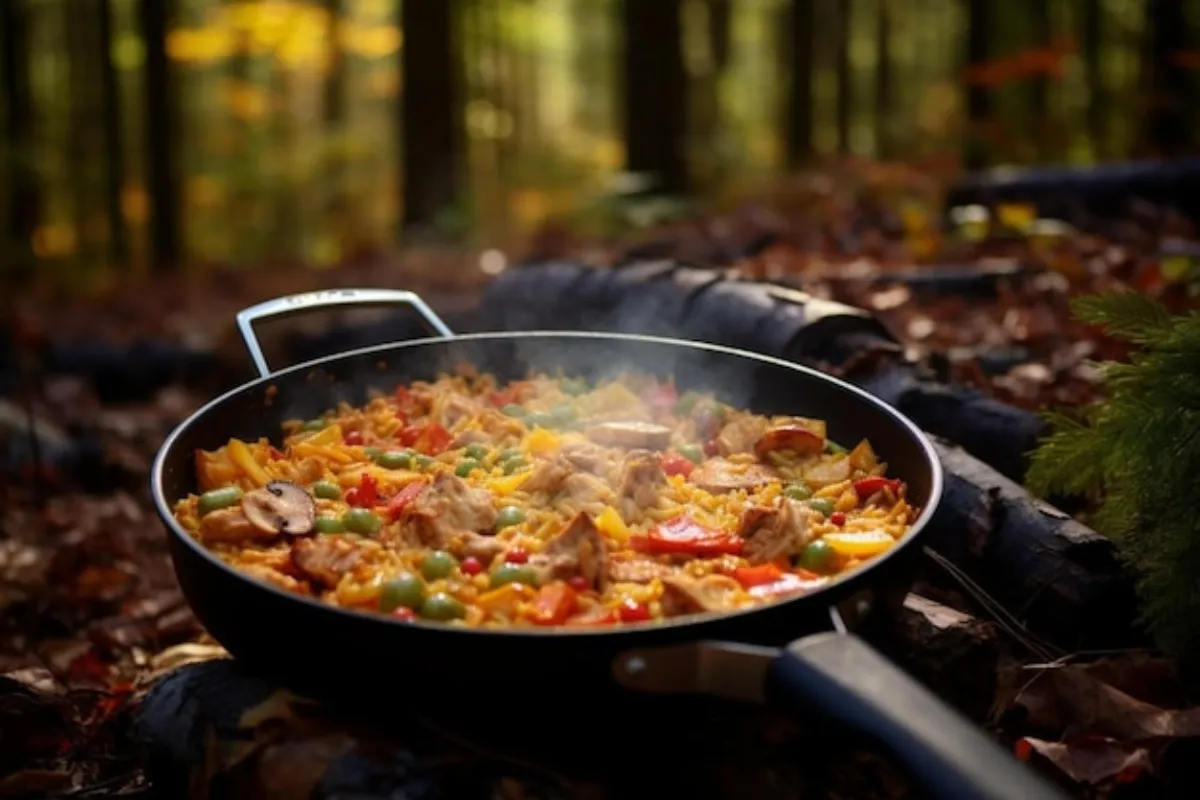Minnesota has a rich culinary heritage, and at the heart of this tradition is the warm, hearty dish known as the hotdish. For many Minnesotans, a hotdish represents more than just food; it’s a piece of cultural identity. Yet, for those unfamiliar, the term “hot” might seem interchangeable with the more widely recognized casserole. While these two dishes share similarities, they have distinct differences, especially in the context of Minnesota’s unique food culture. In this article, we’ll explore what makes a hotdish different from a casserole and their roles in Minnesota’s culinary scene.
What is a hotdish?
Hotdish originated in the Midwest, particularly in Minnesota, during the early 20th century. A true Minnesotan hotdish typically combines simple and budget-friendly ingredients like starch (commonly potatoes or pasta), a protein (often ground beef), vegetables, and a creamy canned soup, like cream of mushroom, to bind everything together. People often serve hotdish as the main course at family gatherings, community potlucks, and church suppers, making it a comforting and communal dish.
The simplicity of hotdish sets it apart, providing all the necessary components of a meal in one serving. According to Ramshackle Pantry, hotdish often includes regional variations, such as the famous Tater Tot hotdish. This version typically features ground beef, vegetables, and a topping of crispy tots.
What is a casserole?
Casserole is a more general and versatile term that refers to any dish baked in a deep, oven-safe pan. Casseroles can include a wide variety of ingredients, such as grains, vegetables, proteins, sauces, and cheese. This broader definition means that casseroles are not confined to specific ingredients or methods of preparation. They range from light, vegetable-based dishes to heavier, meat- and cheese-laden creations.
Unlike the specific components of a hotdish, casseroles offer greater flexibility and encourage creativity in the kitchen. Some casseroles involve pre-cooked ingredients or require layering, while others, like lasagna, focus on intricate assembly. As Midwestern HomeLife notes, casseroles serve as either a main course or a side dish, depending on their composition and context.
A Historical Glance: How Hotdish and Casserole Came to Be
The origins of hotdish in Minnesota date back to the early 1900s. During the Great Depression, families needed a way to feed large groups affordably, which led to the invention of the hotdish. By mixing pantry staples like canned soup, pasta, or potatoes with available meat and vegetables, families could create a filling meal that was both cost-effective and easy to make. Over time, this dish became a staple in Minnesota’s food culture, frequently appearing at community gatherings and family dinners.
In contrast, casserole has a longer and more varied history. The word “casserole” comes from the French term for the deep dish or pan used for cooking. The concept dates back to ancient times, with various cultures baking mixed ingredients in a single dish. However, it wasn’t until the 20th century that casseroles gained widespread popularity in America. The advent of canned soups and pre-packaged ingredients made casseroles easier to prepare and customize, quickly integrating them into dinner parties, holiday feasts, and potluck events nationwide.
Hotdish vs. Casserole: Breaking Down the Differences

Although hotdish and casserole might seem interchangeable at first, several factors distinguish the two. Here’s a breakdown of the key differences:
1. Ingredients
- Hotdish:
- Relies on simplicity and common, accessible ingredients.
- Almost always includes starch (potatoes, pasta, or rice) as the base.
- Often combines a protein, typically ground beef, with vegetables (often canned or frozen).
- Use a canned soup, like cream of mushroom or tomato, to bind the ingredients together and add creaminess.
- Features a crunchy topping, such as tater tots or crispy onions.
- Casserole:
- Offers a broader range of ingredient options, from grains and pasta to beans, seafood, and even tofu.
- Meat remains optional, with many vegetarian variations available.
- Incorporates fresh vegetables, various sauces, cheese, broth, or cream for different flavors and textures.
- Often more complex, with layers or multiple preparation steps.
2. Preparation and Cooking
- Hotdish:
- Typically involves minimal preparation: mix ingredients in a single dish and bake until cooked through.
- Requires no precooking, providing a convenient option for busy families.
- Focuses on simplicity, designed to be a one-pan meal that can feed a crowd.
- Casserole:
- May involve more elaborate preparation, including layering (like lasagna) or pre-cooking ingredients.
- Often follows a multi-step process, requiring specific seasoning or cooking methods to achieve the desired flavor.
- Allows for various toppings, from cheese to breadcrumbs, depending on the recipe.
3. Regional and Cultural Context
- Hotdish:
- A specifically Minnesotan term, serving as a culinary trademark of the Midwest.
- Acts as comfort food rooted in family traditions, church events, and community gatherings.
- Embodies Midwestern pragmatism: hearty, simple, and nourishing.
- Casserole:
- A more universal term, recognized and prepared nationwide with countless variations.
- Adapts to different regional cuisines and available ingredients.
- Suitable for various settings, from formal dinner parties to casual family meals.
4. Role in the Meal
- Hotdish:
- Always serves as the main course, providing a complete meal with protein, starch, and vegetables.
- Casserole:
- Can act as either a main course or a side dish, depending on the ingredients and occasion.
Popular Hotdish Recipes in Minnesota
Minnesota offers some of the most beloved hotdish creations. Here are two classic examples:
- Tater Tot Hotdish
- Ingredients: Ground beef, green beans, cream of mushroom soup, tater tots.
- Method: Combine browned ground beef and vegetables in a baking dish, mix with soup, top with tater tots, and bake until golden and crispy.
- Why it’s a classic: The crispy tater tots and creamy filling make it a beloved dish for all ages.
- Wild Rice Hotdish
- Ingredients: Wild rice, ground beef or chicken, mushrooms, cream of mushroom soup.
- Method: Mix cooked wild rice, meat, mushrooms, and soup in a casserole dish, and bake until bubbly.
- A uniquely Minnesotan take on hotdish, showcasing local ingredients.
Popular Casserole Dishes
While hotdish rules in Minnesota, casseroles have their own set of classic recipes:
- Tuna Noodle Casserole
- Ingredients: Egg noodles, canned tuna, peas, cream of mushroom soup, breadcrumbs.
- Method: Pre-cook noodles, mix with tuna, peas, and soup, sprinkle breadcrumbs on top, and bake.
- A comforting dish recognized nationwide.
- Chicken and Rice Casserole
- Ingredients: Chicken breast, rice, chicken broth, vegetables, cheese.
- Method: Layer chicken, rice, and vegetables in a baking dish, pour broth over, and bake until rice becomes tender.
- Versatile and easy to customize with different seasonings and vegetables.
Why Minnesotans Prefer the Term Hotdish
In Minnesota, hotdish isn’t just a dish—it embodies cultural identity. It reflects the practicality and warmth of Midwestern life. The term “hotdish” over “casserole” stems from regional pride and the role this dish plays in community traditions. As Clay Coyote explains, calling it a hotdish allows Minnesotans to embrace their heritage and distinguish their unique cuisine.
Everyday ingredients like canned soup and frozen vegetables highlight the frugality and resourcefulness of Minnesotans, especially during challenging times. The word “hotdish” evokes memories of family dinners, potluck gatherings, and the joy of sharing a meal that is both hearty and humble.
FAQs: Clearing Up the Confusion
Why is it called a hotdish in Minnesota?
The term “hotdish” originated in the Midwest, particularly in Minnesota, to describe a one-pan, hot meal that could feed a large group. It became popular during the Great Depression because of its simplicity and practicality, allowing families to stretch ingredients and create filling, affordable meals.
Can a hot dish be called a casserole?
While hotdish is a type of casserole, not all casseroles qualify as hotdishes. All hot dishes can be considered casseroles because they involve baking a mixture of ingredients in a deep dish. However, not all casseroles adhere to the specific ingredient combination and purpose of a hotdish.
Are all casseroles hot dishes?
No. The term “casserole” encompasses a broader range of dishes that may not fit the traditional structure of a hotdish. Casseroles include more complex preparation techniques and varying roles in meals.
What makes a hotdish unique compared to other casseroles?
The simplicity, use of staple ingredients, and one-dish convenience set hotdish apart. It’s designed as a hearty main course, whereas casseroles offer more flexibility in ingredients and serving options.
How did hotdish become a Minnesota staple?
Hotdish gained popularity in Minnesota due to its ability to stretch ingredients and provide a filling, nourishing meal. It evolved into a regional tradition, becoming synonymous with community gatherings, potlucks, and family dinners.
Internal Linking Opportunities
To explore more comforting, hearty recipes, check out the following articles:
- Chicken Pot Pie Pasta Recipe: A delightful variation on classic casserole dishes.
- Creamy Chicken and Rice Soup: Another comfort food that warms you up on cold Minnesota days.
- Crunchwrap Casserole: For a modern twist on traditional casserole recipes.
Conclusion
In summary, while hotdish and casserole share some similarities, they each possess unique characteristics, especially within Minnesota’s cultural landscape. A hotdish represents quintessential Midwestern comfort food, defined by its simplicity and role as a hearty, one-pan main course. In contrast, a casserole offers more versatility in ingredients, preparation, and serving roles, making it a staple in homes nationwide.
Understanding the differences between a hotdish and a casserole goes beyond mere culinary definitions; it involves appreciating the cultural significance and regional pride behind these beloved dishes. Whether you enjoy a classic Tater Tot hotdish or a traditional tuna noodle casserole, both dishes bring warmth and comfort to any table.
